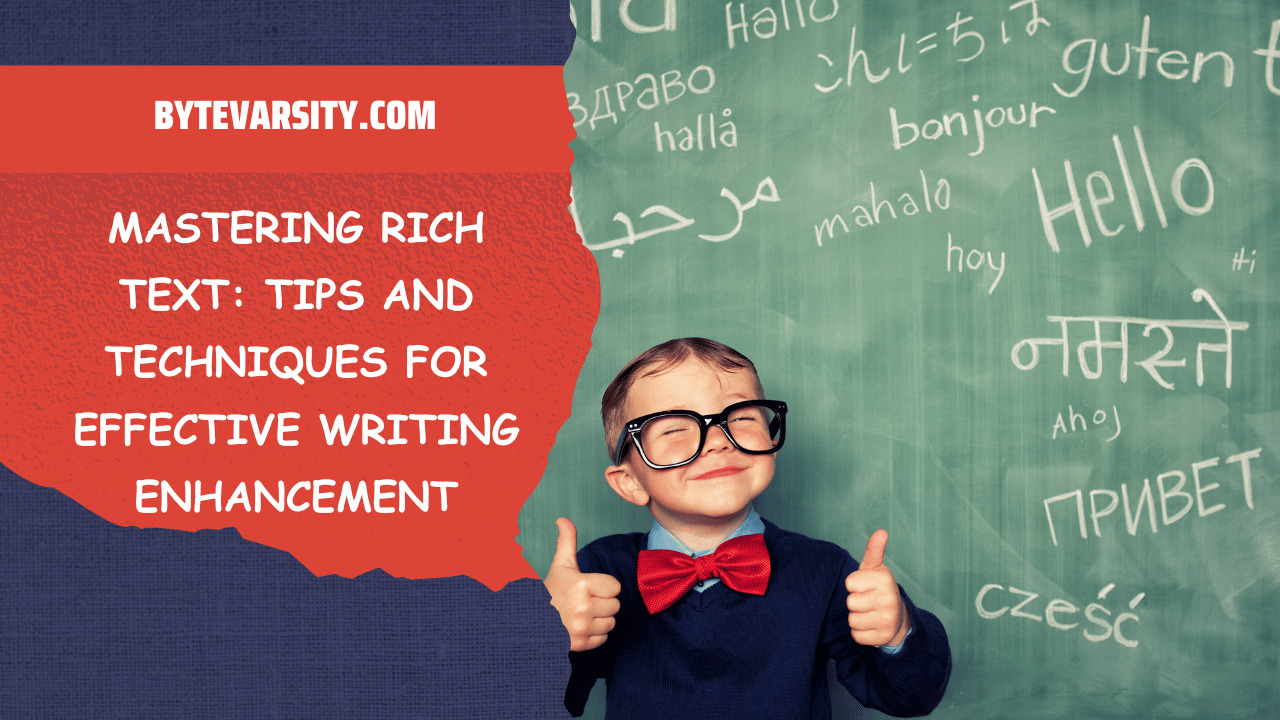Mastering Rich Text: Tips and Techniques for Effective Writing Enhancement

Clear and engaging writing is more important in the digital age than ever. As individuals communicate in an increasingly text-based world, understanding how to use Rich Text for Writers effectively can significantly enhance your written content. Rich texts, including bolding, italicizing, underlining, and hyperlinking, can draw attention, emphasize key points, and guide the reader through your work.
Contents
Understanding the Fundamentals of Rich Texts
Such texts aren’t just about making words look different. It can effectively guide the reader’s eye and enhance comprehension when used correctly. Here are some key elements:
Bold: Bold text can emphasize important points or keywords. It stands out, drawing the reader’s attention immediately.
Italics: Italics can denote titles and foreign words or emphasize a word subtly. It can also indicate a distinct voice or tone.
Underlining: Underlining is traditionally used for book titles or to add emphasis. Underlining is often avoided in digital content as it can be mistaken for a hyperlink.
Hyperlinks: Hyperlinks can direct readers to additional resources, related content, or citation sources. They are crucial for digital writing, helping to build a rich, interconnected content web.
The Art of Emphasizing Words
Rich text is a powerful technique but should be used with purpose and moderation. Here’s how to create the most of this technique:
Less is More: Overusing such texts can make your content look cluttered and overwhelming. Stick to highlighting only the most essential points.
Consistency: Maintain a consistent approach to using these texts. For example, if you’ve used bold to highlight keywords, keep it that way throughout your text.
Complement, Not Replace: The rich text is a tool for emphasis, not a replacement for strong writing. Ensure your content is clear and effective, even without rich text enhancements.
Crafting a Visual Hierarchy with Such Texts
Visual hierarchy is the particular arrangement and presentation of elements in a stylized way that indicates importance. Rich texts can create this hierarchy in writing, guiding the reader’s eye to the essential points.
Headings and Subheadings: Use different font sizes and bolding to create a clear structure. Headings should stand out and clearly indicate the content of the following section.
Lists and Bullet Points: These can organize information in a clear, easy-to-read manner. Use bold or italics to emphasize vital points within the list.
Block Quotes: Block quotes can highlight important statements or quotes in longer texts. They break up the text and draw the reader’s eye.
In digital content, hyperlinks are a form of rich text that serves a dual purpose. They can offer additional information and context and create a network of related content.
Use Descriptive Text: The clickable text in a hyperlink should give a clear idea of the linked content.
Avoid Overlinking: Too many hyperlinks can distract and confuse the reader. Link only when necessary and relevant.
Check Your Links: Ensure your hyperlinks lead to the correct pages and that those pages are accessible and functional. Broken links can frustrate readers and undermine your content.
Conclusion
Mastering Rich Text for Writers is about balance. It can guide your reader, highlight important information, and enhance overall content. But remember, the power of such texts lies in their ability to complement good writing, not replace it. Keep your content clear and engaging, use such texts judiciously, and you’ll be well on your way to mastering this vital aspect of modern writing.




